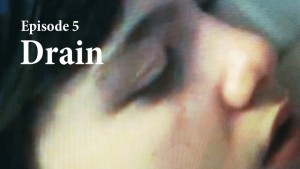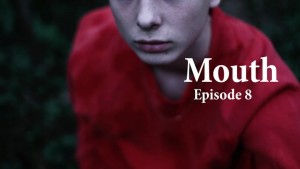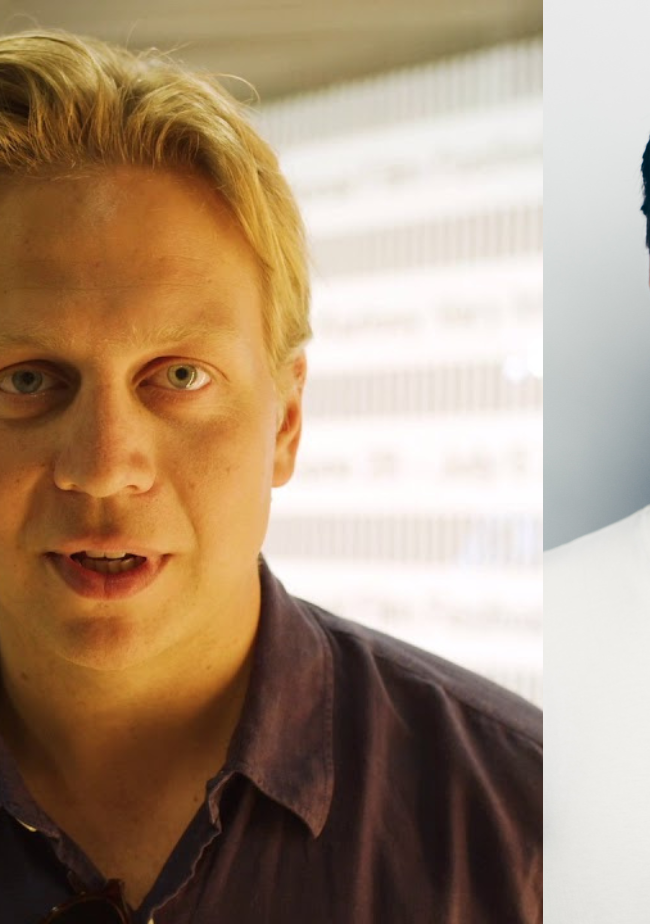Nick Toti’s “Digital Gods”- Transmission Six
 (Nick Toti analyzes the year’s strangest documentary series. Kiddiepunk Cartoons a surreal and deeply obsessive investigation of the psychic aftermath of a massive tornado in Oklahoma.)
(Nick Toti analyzes the year’s strangest documentary series. Kiddiepunk Cartoons a surreal and deeply obsessive investigation of the psychic aftermath of a massive tornado in Oklahoma.)
“Sampling is a new way of doing something that’s been with us for a long time: creating with found objects. The mix breaks free of the old associations. New contexts form from the old. The languages evolve and learn to speak in new forms, new thoughts. Sound and image divorce and reconfigure before they reunite in the mix.”
-DJ Spooky That Subliminal Kid, Rhythm Science
“I am now the last artist here – all the others are free. But all things are equal. If I stay here, then I have plenty to occupy myself. If I am released, then I will enjoy freedom. If I manage to leave for the U.S., then I will be over there. You carry your own joy with you wherever you go.”
– Kurt Schwitters, letter to his wife written from Hutchinson Internment Camp, April 1941
To hear Kiddiepunk Cartoons described by its content, you might be fooled into mistaking it for a typical documentary. After a tornado caused massive damage to the city of Moore, Oklahoma in 2013, filmmaker Michael Salerno traveled there to conduct interviews with survivors and record footage of the wreckage. Over the next three years, Salerno assembled this material into an eight-part webseries released for free on his website. If this synopsis sounds like anything you’ve seen before – perhaps a social documentary seeking to raise awareness or raise funds by trafficking in tragedy – then that only demonstrates the futility of trying to describe this incredible series through anything other than the distinct style of its creator. Kiddiepunk Cartoons is, to risk sounding hyperbolic, a towering achievement of abstract, idiosyncratic form. It is as far from a typical documentary (a genre that is in great need of some stylistic vitality) as anything I’ve ever seen.
Kiddiepunk Cartoons – Full Trailer from Kiddiepunk on Vimeo.
Each episode of Kiddiepunk Cartoons ranges from about 3-7 minutes. Its audacity is on display right from the start: a solid color fills the screen, pulsing with subtle digital distortion. Ghostly, indistinct noises screech and rumble. Words flash in different parts of the screen announcing this episode’s title: Zombies, Milk, Drain, etc. Depending on the episode, you might find a mixture of the following: tornado wreckage, boys wrestling, an alarmingly handsome young man and/or his younger brother, looping audio interviews with tornado survivors, overlapping video interviews with young children, haunting flashes of lightning over the sounds of a “fucked-with” (according to the credits) Mahler symphony, and an indecipherable monologue that might be from the perspective of a ghost. Using a variety of techniques – intercutting, coloring, repeating, re-photographing, distorting, and general “fucking with” – Salerno edits these disparate elements together as a concise series of audio-visual collages that contain serious emotional depth.
For something as abstract as Kiddiepunk Cartoons to be so stylistically coherent is a remarkable accomplishment, and it was far from accidental. Salerno, almost the sole creative force behind the series, has been developing this particular aesthetic across media for years. In addition to filmmaking, he is also a writer, photographer, and musician, and he runs the independent publishing house Kiddiepunk Press. Kiddiepunk is Salerno’s brand: the hub from which all of his endeavors seem to spread out and simultaneously refer back. But what is Kiddiepunk?
Salerno’s answer is pretty straightforward: Kiddiepunk is a loose collection of works focused around the theme of childhood…but this answer is overly simplistic. A quick glance through the Kiddiepunk website gives a pretty good sense of the aesthetic: a tactile, DIY sloppiness executed with surprising precision that creates a tension between the clear artistry and the physical degradation. Imagery of children in various states of compromise presents childhood innocence as an inherently temporary and embattled state that will either be outgrown or cut short. In the Kiddiepunk aesthetic, nostalgia is always tempered with dread.

Kiddiepunk Cartoons feels like something of a culmination of the Kiddiepunk project thus far. Salerno has published four issues of an annual zine called Teenage Satanists in Oklahoma, providing a geographical connection. Much of the phenomenal sound design in Kiddiepunk Cartoons was provided by Aspen Michael Taylor, who also has three albums released through Kiddiepunk. (Aspen Michael Taylor, it turns out, is also a pseudonym of Salerno’s. This particular can of worms I’m choosing to leave closed for the purposes of this article.) And, finally, the topic of tornados (or, more generally, extreme weather) is a recurring subject in Salerno’s cinematic work, appearing also in his previous movies Elri Paints Himself as a Tornado, Childhood, and Silence.
But despite this recurring thematic, one can easily imagine Salerno’s style being recognized in a movie on any topic. Tornadoes may occupy the privileged position of being his obsession, but his formal command of these works suggests that he wouldn’t be bound by any particular subject matter. The same way that a great painter’s work can be easily recognized regardless of its subject, a Salerno movie always carries his distinct aesthetic signature.
I opened this piece with two quotes. DJ Spooky’s Rhythm Science is a meandering book ruminating on the philosophy of hip-hop and electronic music. I found myself thinking about these topics a lot while watching Kiddiepunk Cartoons. Like hip-hop, it’s built upon “sampling,” but the samples that Salerno uses are different from those crate-dug and needle-dropped hooks that DJs use to create beats. He isn’t appropriating pop culture, so much as culture itself: rows of suburban houses have been pulverized by nature, captured on camera, and reunited in the mix. This is life-as-found-object, reshaped and processed for maximum effect.
Which brings me to the second quote: Kurt Schwitters was a pioneering artist of the 20th-Century avant garde. He worked in various media and created his own one-man artistic movement that he called “Merz.” Essentially a form of collage, Merz involved utilizing all things broken down and creating something new from the fragments. Schwitters created hundreds of works by combining, as he put it, “all conceivable materials for artistic purposes.” All things being equal, why favor paint above wool, wire-netting, floor tiles, or old porridge? His quote at the top of this article was written from an internment camp on the Isle of Mann where he was held as an enemy alien after fleeing the Nazis in his native Germany. Despite these severe hardships, he found hope in the creative impulse that he carried with him.
I see something similar in Salerno’s work. Kiddiepunk Cartoons is a masterpiece of cinematic collage. The images of destroyed homes are removed from any sense of sentimentality and presented only for their perverse beauty. In my favorite episode, “Boys,” there is no dialogue. All we see is rapid cuts from the image of a row of destroyed houses to the image of two boys wrestling in slow motion. Houses, boys. Houses, boys. Creating with found objects. Salerno’s mix breaks free of the old associations. New contexts form from the old and learn to speak in new forms, new thoughts.
– Nick Toti (@NickTotiis)










